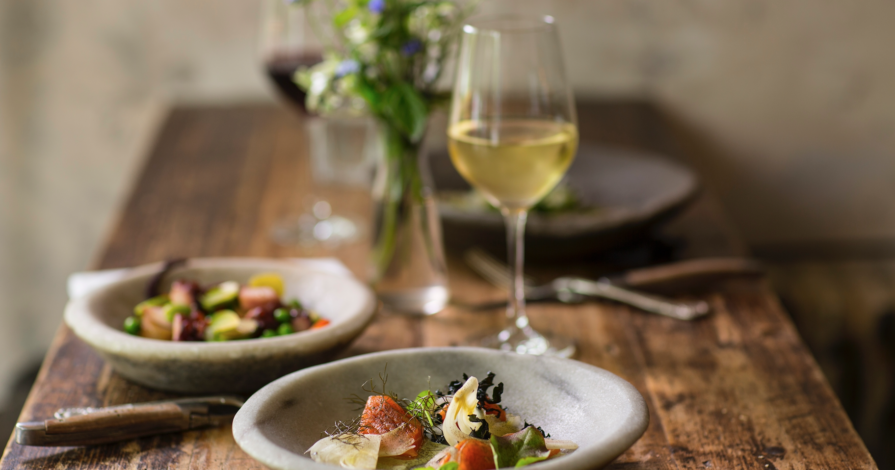Bere diversi vini a tavola, fa male?
Domandona da un milione di dollari.
Quante volte avete sentito dire: “Non mischiare il vino che poi stai male!”
In realtà bere diversi vini a tavola è possibile e non ci sono problemi, ammesso che si seguano delle piccole accortezze.
Prima di tutto, mai esagerare.
Questa è una cosa che non mi stancherò mai di dire.
Bere bene non vuol dire bere tanto. Anzi.
Bere troppo vino e troppo in fretta può essere pericoloso.
Fare una cena (o un pranzo) con un ordine di degustazione oculato, invece, può essere solo una gioia per il palato.
Si inizia con vini bianchi freschi e giovani, in genere, per poi salire di gradazione e di struttura. Questo, ovviamente, può comportare anche un cambio di tipologia durante lo stesso piatto. Non abbiate paura di sperimentare!
Bere lentamente, gustando a fondo il vino (di qualità), durante un pasto con diverse portate e magari di qualche ora, non è affatto pericoloso.
Inoltre, ogni vino ha il suo ritmo. Questo significa che si berranno di più e più velocemente quei vini bianchi più leggeri (generalmente riservati a inizio pasto) rispetto a vini rossi più corposi (generalmente ideali per i secondi piatti).
Un discorso a parte deve essere fatto per i super alcolici e i cocktail. Quelli fanno sempre male se mischiati insieme. Nessuna poesia alla fine di una serata di miscugli alcolici, solo lunghi mal di testa o peggio.
Sempre meglio scegliere un buon vino, non credete?
—
English Version.
Drinking various wines during a meal can hurt?
How many times have you heard: “If you’ll mix the wine you’ll be sick!”
In reality, drinking different wines at the table is possible and there are no problems, provided that you follow the small precautions.
First of all, never exaggerate.
This is something that I will never tire of saying.
Drinking well does not mean drinking a lot. Rather.
Drinking too much wine and too fast can be dangerous.
Making a dinner (or a lunch) with a careful tasting order, on the other hand, can only be a joy for the palate.
It starts with fresh and young white wines, in general, and then rises in gradation and structure. This, of course, can also involve a change of type during the same plate. Do not be afraid to experiment!
Drinking slowly, thoroughly tasting the wine (of quality), during a meal with different courses and maybe a few hours, is not at all dangerous.
Furthermore, every wine has its own rhythm. This means that the lighter white wines (generally reserved at the beginning of the meal) will be more eager to drink than the more full-bodied red wines (generally ideal for second courses).
A separate discussion must be made for the super-spirits and cocktails. Those always hurt if mixed together. No poem at the end of an evening of alcoholic mixtures, only long headaches or worse.
Always better to choose a good wine, do not you think?



what do you think?